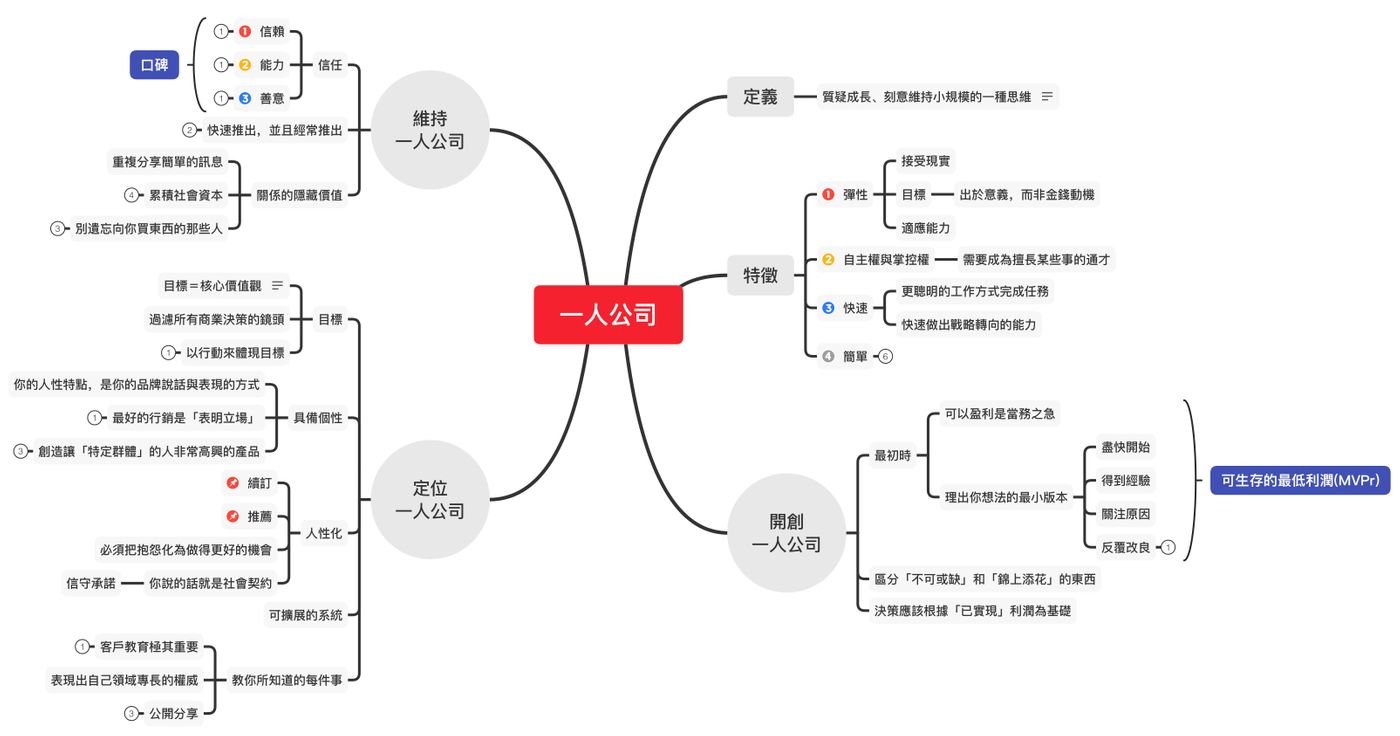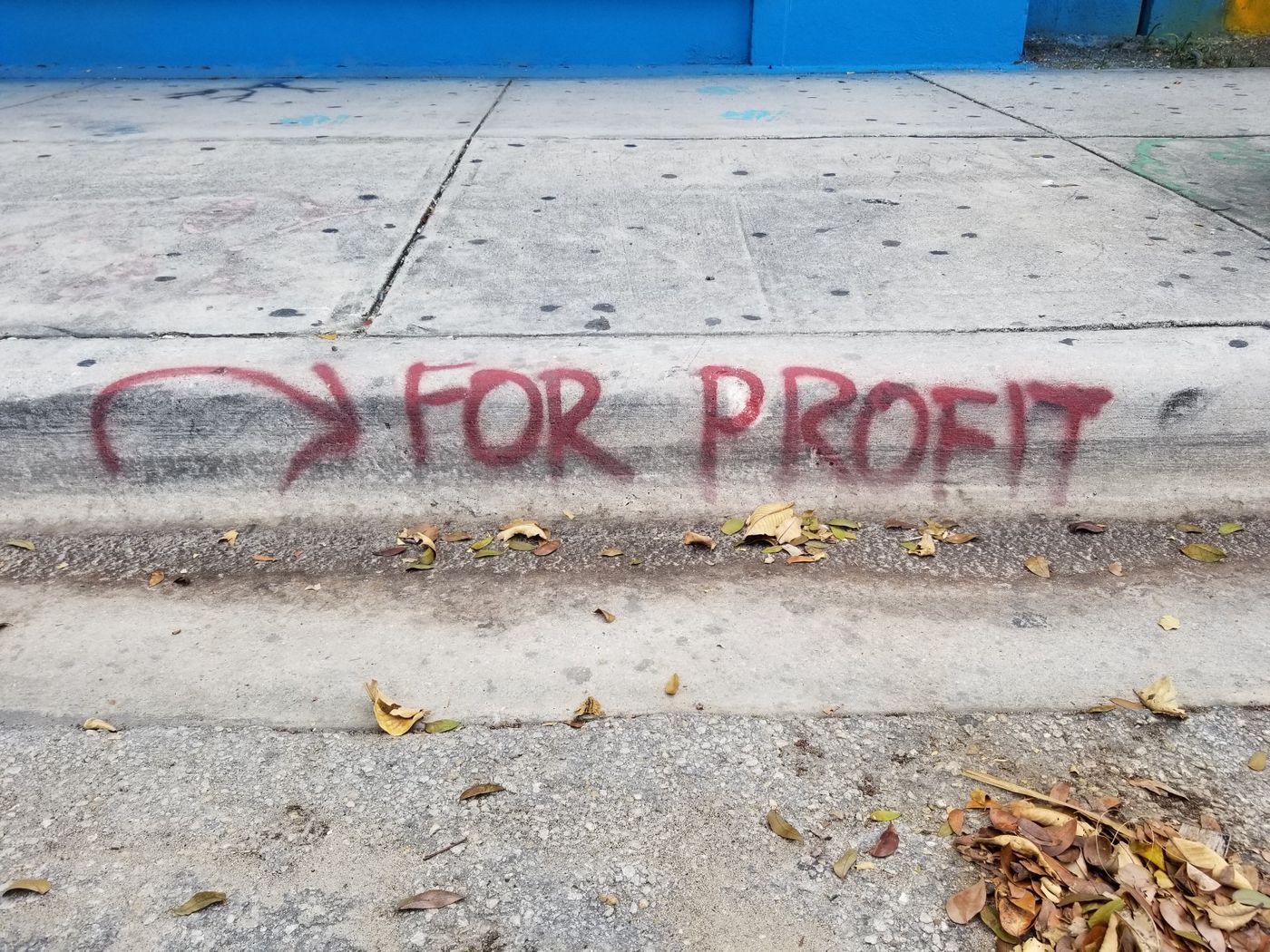"One Person Company" can also be read by office workers
Author: Paul. Paul Jarvis
Translator: Liu Yiyin Publisher: Yuanliu

This book is talking about a value for corporate development, and even a future trend: one-person company .
■ What is a one-person company?
The author has built his own one-person Internet business for more than 20 years. At the beginning of the business, I had the idea of " more does not mean better " for the prototype of the company. Along the way, I found that he was not alone. There was a group of people and more and more researches, all of which confirmed the belief of the one-person company:
⚠️ Question growth and deliberately maintain a small-scale mindset.
At this point, in order to avoid preconceived stereotypes, first point out three things to clarify:
1. Questioning growth is not the same as rejecting growth
It means staying awake and making informed decisions when faced with an opportunity. Measure meaningful growth on the basis of “ realized ” profits, rather than expected profits and growth blindly .
In fact, in Chapter 8 of this book, "Scalable Systems," it was mentioned that one-person companies can drive scale with simple, repeatable systems—not necessarily requiring more staff or resources.
2. The one-man company approach is not just for one-man businesses
"One person" company is not that you can't hire employees, you can only rely on yourself in everything.
It is a small but beautiful business body that allows you to use your abilities to become more independent and more responsible for your career.
3. A one-man company is more than just being a freelancer
Freelance (case) workers are the perfect first step to becoming a one-person company, but they are different.
A one-person "company" still fits the traditional definition of an entrepreneur, using systems, automation, and processes to build a long-term business, so you do n't trade time for money .
Profits will be generated beyond the time you put in.
■ Experience
" One Person Company " is not a book of chicken soup for the soul, but when I was reading it, I felt a strong "momentum" -- not working for others, but for myself .

Compared with the business management books I have read before, most of them are from the perspective of senior managers, talking about downward management, with a sense of distance; a one-man company is not only a leader, but also the first line of contact with consumers, it is more enjoyable to read. It is friendly and easy to connect with readers (and consumers of this book).
I think that the endless stream of "kinetic energy" probably comes from this!
⚠️ One-person companies are easier to build relationships with consumers.
⋯
"I'm just an ordinary office worker, is it worth the time to read this book?"
This is also my doubt, and after reading this book, my answer is yes. Many principles in the book can also be applied to daily life. For example, many times, I think more than I do, or just thinking (planning) consumes a lot of time .
The author recommends "launching it as soon as possible", getting experience from it, and then using the information obtained to make adjustments.
This "do it quickly" style of behavior is not a momentary passion and hasty action. Whether it is a "minimum version" or "MVPr" (see the notes at the end of the article), as far as I know, it is a concept of risk control . , If it is the case in ordinary affairs, why is it not the same for investment and financial management?
⋯
The book talks about the " goals " of a one-person company (see the notes at the end of the article), which subverts my imagination a bit.
When it comes to goals, the first words that come to my mind are words like "dream", "passion", "achievement". But the author's interpretation of the goal is a set of standards for life, embodied in actions , and it is concrete.
I can't help but think that, like a one-person company, I will encounter various opportunities (or temptations) along the way, and various life fork points that require a decision.
Whenever you are hesitant to move forward, you may wish to point directly to your heart and consider whether after making these decisions, whether it violates or deviates from the goals set at the beginning - the most core values , what should you believe to do? The answer will naturally emerge, self-evident.
⚠️ The goal is the filter that filters all your decisions.
⋯
Finally, about the matter of " teaching " (see the notes at the end of the article), a new layer of cognition has been added.
At the beginning, I learned from " Highest Learning to Use " that "teaching" is a combination of "speaking, writing, and acting", and it is a high-quality "output"; then in " Maybe You Should Talk to Someone ", "Teach" is a final check button to confirm that "you have learned". When the process of "see, do, teach" can be successfully completed, it means that you have mastered the skill.
What I learned from " One Person Company " is that the message behind "teaching" is "equality, openness, and transparency", which is a way to build trust , and part of the trust can be spread out -- the driving force is the Internet road.
⚠️ "Teaching" is also a tool for building word-of-mouth.
■ Notes: Three Facets
First attach the sorted Mind Map ( original image ). Then, from three aspects— creating, positioning, and maintaining a one-person company, I picked out a few particularly interesting highlights.

Starting a One-Man Company: Profitable as soon as possible

To start a one-person company, you should first figure out a minimal version of your idea, and then find a way to quickly implement it. Avoid investing a lot of time or money in the first place.
Through small-scale "testing the water temperature", you will get experience, feedback, and then pay attention to what makes those casual contacts become customers? Further work to improve and optimize.
⚠️ Minimum version → release as soon as possible → get information → pay attention to the reason → iterative improvement.
In other words, the launch of a product is not a one-time, single event, but a continuous process. Develop in a step-by-step fashion, not all at once.
⋯
Focus only on core functionality and reduce costs and overhead. Small-scale operations also help to quickly find and achieve your own Minimum Viable Profit (MVPr).
A one-person company can only become a full-time investment when the money earned is enough to pay for at least one person—the minimum for an MVPr. The sooner you achieve profitability, the sooner you can think about your "next" actions.
And have the right to choose, everything is up to you.
Positioning a One-Man Company: Purpose and Personality

To be a successful one-person company, there must be a real underlying goal .
This goal is not just a statement of business purpose on the website, nor is it just a marketing effort. It's your company's own actions and performance , sometimes even over profits.
⚠️ Goals and passions are two completely different things.
Goals come from a set of core values that a company, business owners hold—the lens that filters through all your business decisions , and a shared identity with customers; but passion is just a whim that we think we love doing something.
Enthusiasm is the result of hard work , not the other way around.
Enthusiasm may follow when you're focused on solving a problem or making a change, because you're actually invested in what you're doing instead of imagining that you might be passionate about something.
⋯
A one-person company also needs to have a personality —the real you, the one taught by traditional business and hidden under the guise of "specialization".
It's important to take a stand because it's like a beacon to hold your point high and show your audience that you're not just selling your stuff, you're doing it for a specific reason , and they're going to buy at all costs, only Because they agree with what you do.
⚠️ The cost of neutrality can be higher - it feels tedious and doesn't provoke an enthusiastic response from anyone.
A one-person company that doesn't focus on unlimited growth and doesn't think more is better is able to focus on aligning its product with the values of a smaller, more specific group of people, and then market it to their needs and opinions.
That way, it doesn't matter if other people outside the group hate what you do or stand for - you didn't see them as customers in the first place.
Sustaining a One-Man Company: The Power of Education

As a one-person company, teaching people about your product will set you apart for at least four benefits:
- They will see you as a teacher and a domain expert on a shared topic.
- An opportunity to show your audience the benefits of what you're selling.
Show them the whole reason they would want to buy from you, not to sell them outright, but to provide them with the information they need and let them decide for themselves if the purchase is right for them.
- Being transparent and open and honest will help you build trust with your customers.
- Make sure they become long-term customers and tell others about their positive experiences.
⋯
The last two points are particularly important. The trust of customers will lead to referrals, or word of mouth, allowing part of your trust to be passed on and spread out.
One-person companies can really benefit from word-of- mouth marketing because it's easier for a one-person company to build these personal relationships and maintain a closer connection with customers.
Read Bigen's Facebook page 👉Click here .
Like my work? Don't forget to support and clap, let me know that you are with me on the road of creation. Keep this enthusiasm together!


- Author
- More